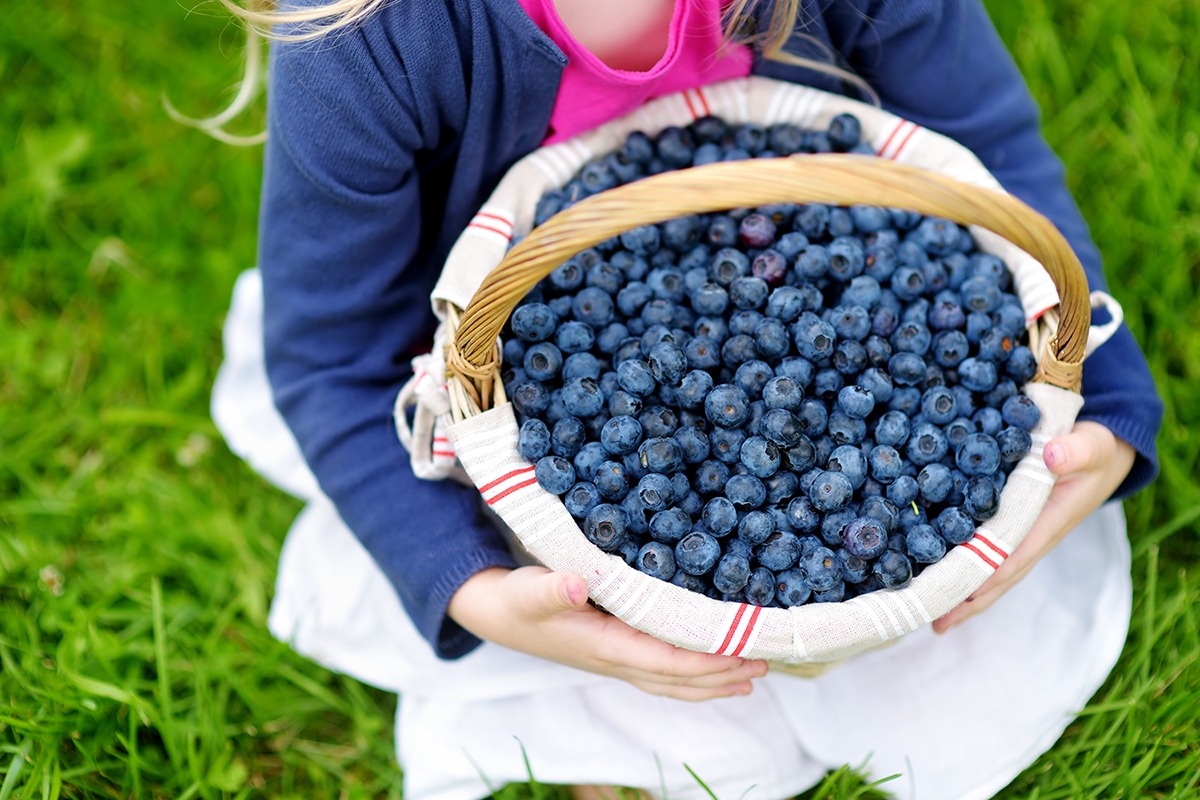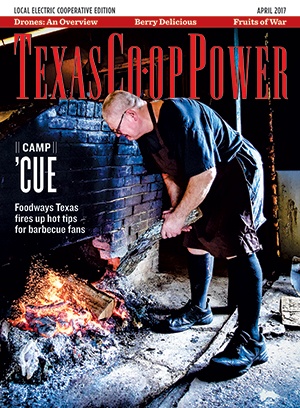It’s 7 o’clock on a May morning, but already dozens of cars are parked at Moorhead’s Blueberry Farm. It’s the peak of blueberry season, and the most eager pickers arrived at 5:30, says Sid Moorhead, whose father, Albert Moorhead, founded the pick-your-own farm. One mother says of her 3-year-old, “He was still in his pajamas because we came so early.”
Blueberry-hungry people drive to the farm between Conroe and Porter, and some will pick from daylight until dark. The fields are open to pickers Friday through Sunday from late May through July. Moorhead advises pickers to come in the evening to take advantage of small-er crowds and cooling temperatures.
“Large bucket or small?” Moorhead family members ask before directing us to the ripe blueberries. The farm has 20 acres and varieties of blueberries. Some ripen by Memorial Day; others wait until Father’s Day or as late as the Fourth of July.
“Regulars ask for certain varieties,” Moorhead says. About half of the berries are early-ripening varieties, and many pickers like them because they are large and plump. “They’re fun to pick,” he says. Among the later-ripening berries are Tifblue. “It’s our workhorse,” he says. “It makes it through the heat.”
It’s warm in the blueberry field, and the atmosphere is festive. The dense bushes hide people, but their voices carry. “It’s the biggest blueberry in history!” a child says. A few rows over, someone begins singing.
On one row, I meet Karen Seay, a re-tired seventh-grade science teacher who drives about 30 minutes from Kingwood every blueberry season. “I have been coming for over 25 years,” she says. “It was a family outing every year.” Seay is lugging a large bucket. She’ll eat the berries fresh for a couple of weeks then freeze the remaining ones for baking during winter.
“Don’t wash before freezing because then they stick together,” Seay advises.
“I try to get the biggest berries,” says Lilly Moore, 9, who has been coming from Kingwood to the farm with her mother, Chrissy Moore, for six years.
“We wait all year for this,” Chrissy Moore says. She has discovered that the best picking is at the often-neglected top and middle of each bush.
“There’s tons of blueberries!” says Brynn Johnson, 11, a first-timer. The bushes are heavy with berries, and I’m reminded of the classic children’s book Blueberries for Sal by Robert McCloskey that describes what I hear as the berries land in my bucket: “Kuplink, kuplank, kuplunk!”
Blueberries are known as a northern fruit, and people often are surprised that they grow in Texas, Moorhead says. Research and experimentation, however, led to the development of heat-tolerant varieties in the 1940s. In the mid-1970s, Albert Moorhead, a descendant of farmers, Texas A&M University graduate and retired elementary school principal, attended a field trip to A&M’s experimental blueberry station in Overton. He bought blueberry plants from North Carolina to create the humble beginning for one of the first blueberry farms in Texas.
“My dad got four rows going, and he invited his friends to come pick blue-berries. He didn’t charge anybody,” Moorhead says. The friends, however, felt guilty about picking free fruit and were reluctant to return. “He started charging them a dollar a pound, and they came back.”
More plants were added, and the farm opened to the public. Today, the bushes —all 9,000 of them—are harvested by visitors. Blueberries are $2.50 per pound. Honey, collected from the beehives kept nearby to pollinate the plants, costs $5 per 12-ounce bottle.
The Moorhead family regularly updates its website, moorheadsblueberryfarm.com, with picking reports.
——————–
Writer Ruth Fields lives in Montgomery and is a member of Mid-South Synergy and Hamilton County EC.


